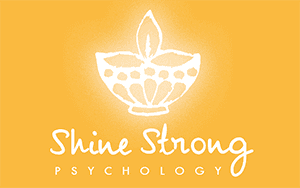
Blog Layout
A reflection of a day on an island
Karen Dow • October 20, 2020
My name is Cathy and I am a high school principal and I attended the Take Time for Wellbeing retreat in October 2020.
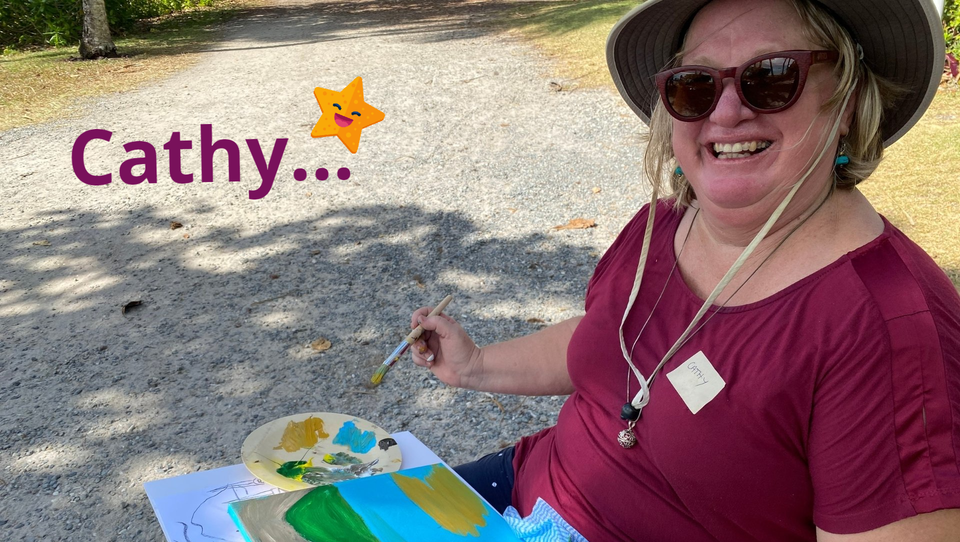
There is no greater way to connect with human beings than through symbol and story. How apt it was then to come by boat to this beautiful island leaving our lives behind for this time. How apt also was it for Leslie to start our day here by opening up our muscles and bodies with morning stretches and for Donna to still out minds with mindfulness that that we were ready to be present to Leslie’s incredible story- the determination it must have taken to reach her physical goal to make those grueling kilometers and to such success?! What an inspirational role model for her young daughter and what courage it took to take the leap and to ‘make shit happen’. Thank you, Leslie for sharing your story.
You chased your dreams and found your flow and now you are using your gifts and talents to give back and help young sportsmen and women.
What a great Segway into Karen’s session on dreams and strengths, using story of course as she does so well. I particularly related to Donna’s “I’m not good enough” thought
and stacking it up against the evidence. It really does take some work to stop those old ‘tapes’ playing in our pesky limbic system. Our prefrontal cortex keeps chewing up the tapes and our limbic system gets out the old pencil and winds the tape back up again. (If you don’t get that metaphor, ask your mums or dads when you get home).
I haven’t mentioned the food
yet – delicious!
The
island
– gorgeous!
And my attempt at art… it was fun. I’m sure you enjoyed your activities this afternoon. Thanks to all of our workshop providers.
I started 2020 with 3 values, clarity, courage and vision. 2020, you know, perfect vision.
It hasn’t quite been the journey I planned but it is probably the journey I needed.
Thanks to Karen, Donna, Meryl and all the organisers for a lovely, well-paced and restful day.
Cathy
See also:

By Karen Dow
•
December 6, 2020
This year has brought so many unforeseen stressors that have challenged us all, so it is important to remember to take time for self-care during this Christmas season. And guess what? I have good news! There is an easy way to do this, you just have to know the science behind it. Did you know we have four happy chemicals in our system that we can activate – it’s just knowing the how that is the game changer. I will take that! Number 1: Endorphins The wonderful endorphins. This one hits us with some lovely pain killer juice after exercise and can even be released after eating dark chocolate and spicy foods. Well, that’s great news as the holiday season is full of great food, so enjoy and then be sure to take your loved one or dog for a walk. Number 2: Serotonin Serotonin: this is the chemical that stabilises our mood, and it is strongest when we have a sense of importance and purpose. Serotonin can also be depleted if we reflect on negative events and past events with a negative belief about ourselves as the brain cannot tell if these events are still happening or imagined. So, gratitude practices can help bring the mind into the present and focus on accomplishments and relationships that are positive in our lives and in turn increase the production of serotonin. So, take home message is to remember to show loving kindness to yourself, don’t judge yourself too harshly, and find little things to be grateful for. Number 3: Oxytocin Oxytocin – known as the love hormone which is released when we engage in close relationships with others, during childbirth, breast feeding and orgasm. It is the wonderful chemical that gives us that warm feeling that generates trust, intimacy and strengthens relationships. So be sure to spend time with others during this break even if it is for short amounts of time. A walk with a friend, volunteer with a charity or an online ‘Zoom’ meeting with loved ones. Number 4: Dopamine Dopamine - best known as the reward chemical. So, when we set goals and achieve them it gives us a reinforcing pleasure. But the opposite can deplete our dopamine such as sitting with self-doubt or procrastinating which has the effect of low mood and loss of motivation. So, it is important to reflect on what you have achieved over this difficult year and begin to make goals for 2021. So, here’s cheers to our happy chemicals.I hope you have fun activating them this season. From the Shine Strong Team, we would like to wish you all a wonderful, fun, mindful and relationship filled holiday season and 2021. And be sure to follow us on our social channels to keep engaged. Holiday closure Our last day in the office is Wednesday 23 December 2020 Our first day back is Wednesday 6 January 2021 Need help now? Click here to get support now, or call '000' in an emergency.
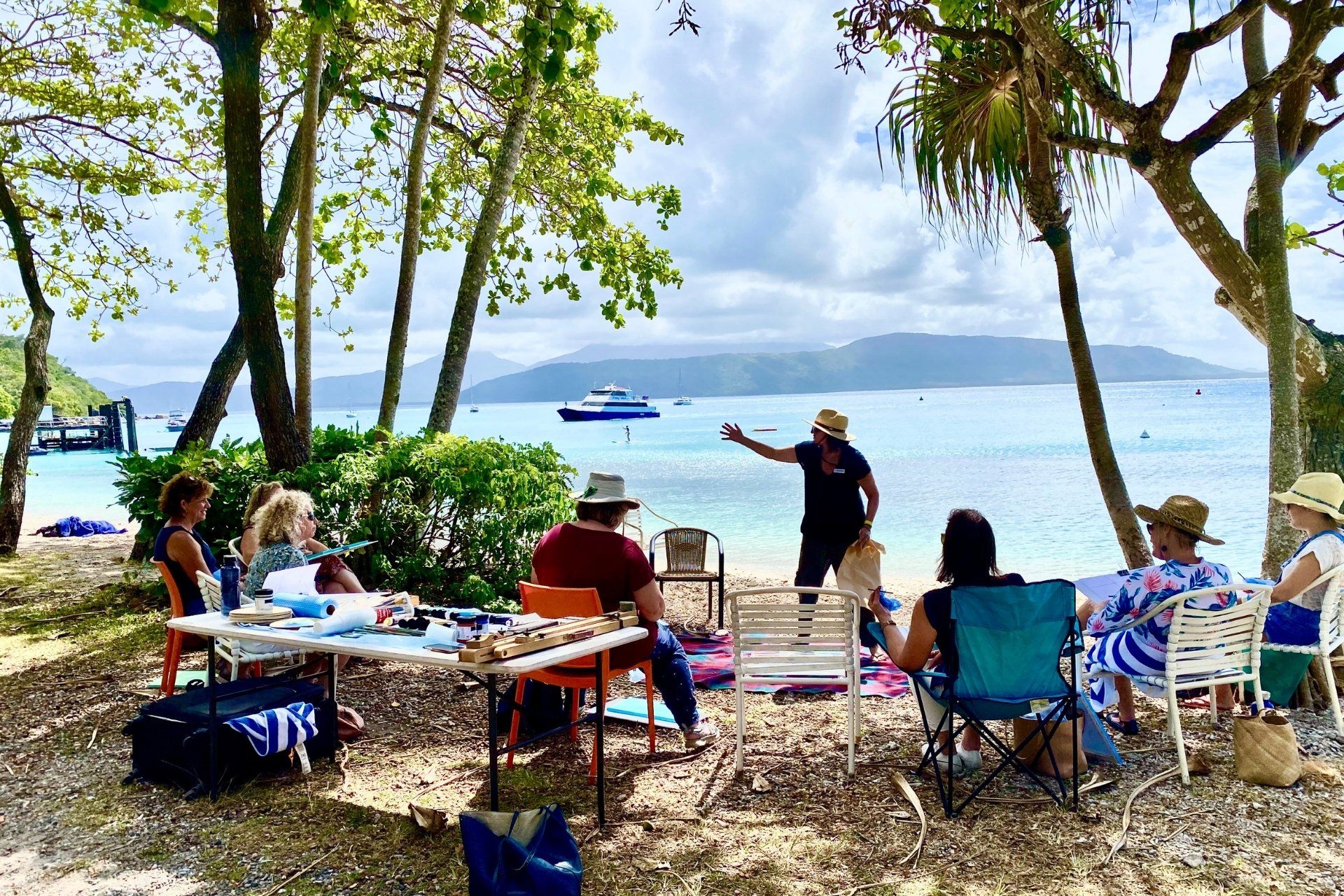
By Karen Dow
•
October 20, 2020
As I wave goodbye to all our retreat participants as their ferry departs Fitzroy Island I experience a huge wave of contentment and happiness at the realisation that the idea I had on my balcony 6 months prior became a reality. Fifty women sharing an unforgettable experience on an Island away from the pressures of life and COVID-19 . The idea of the retreat came after reading some content on an website which is based on the research of positive psychology and it listed 7 pursuits of wellbeing. I contemplated what it would be like to introduce all 7 pursuits to a group of women on retreat and how that would work practically and so the planning began. The pursuits are : Connection with others Spiritual meaning Psychical exercise and healthy food Mindfulness Knowing and operating from your unique strengths and values. Finding your Flow - which is something that challenges and excites us Giving Back Photos Scroll down to see the photos or Check out the photos on Facebook Day 1 So that’s how it all began and then on October the 12th at 9am as the ferry docked at Fitzroy Island and 50 women disembarked it became a reality. Right from the onset the connection between these women were beginning to evolve as they excitedly walked off the pier to be met by the Wellness retreat volunteers. It was a pleasure to watch new friendships being formed from the very first moment. The day started with spiritual meaning as we paid respects to the traditional owner’s past and present. Then we moved onto psychical exercises on the resort’s lawns followed by mindfulness meditation whilst listening to the waves of the ocean close by. What a beautiful and relaxing way to start the day. This was followed by some healthy food for morning tea which included fruits, scones with Jam and cream and fresh tropical juices. After morning tea, we were inspired by our inspirational speakers. On the first day it was a single Mum, Lesley Sutton who had found her flow in Mountain Bike riding after leaving a toxic relationship. She shared how she discovered a strength in herself she did not know she had as she went on to become a successful mountain bike competitor in many national and International races by using her strengths of commitment, determination and sense of purpose. She did acknowledge that she had to fight those negative thoughts that said “you’re not good enough for this” and Lesley did admit that some days those negative thoughts were tough to overcome as she trained and learnt this knew flow of mountain biking. Day 2 The second day we were brought to tears by Alie Chadburn story of overcoming the death of a loved one. Her daughter died by suicide 6 years prior when she was only 13 years old. She shared her journey since this point and how she has been able to return from the brink of despair. She found her strength from being on water, a love that both herself and her daughter had shared. So Alie has gone on to honour her daughter by starting a paddle boarding tour company, WhatsSUP. She now connects with others doing her flow of paddle boarding whilst sharing her story, with the hope that others will draw courage in the knowledge that they overcome life’s pains and challenges. These talks led onto a one-hour workshop led by me. The first day we talked about those negative voices in our head that prevent us from moving forward ‘I’m a failure”, “I will never succeed” and of course “I’m not good enough”. We heard how we could challenge these voices by exploring the evidence and starting with the words “I AM ENOUGH” Then we learnt how we the importance of identifying our personal strengths and weakness as this is the building blocks of self-confidence. If we are operating out of our weakness then we will confirm our negative self-belief of failure but if we operate from our unique strengths we will set our sail high to catch the wind on our life’s boat and our confidence with gather speed and momentum. The seconds days’ workshop was on Value systems and how important it was to know your own as your values determine our reaction, decisions, and connections throughout your whole life. They are the rudder on your boat steering you in the right direction. We learnt how we can identify our own values and how important it was to honour the others around us that may have different values to ourselves. By the end of these workshops everyone was hungry and moved onto a wonderful healthy lunch provided by Fitzroy Island chef at Zephrys restaurant. What a pleasure, great food, connecting with others whilst enjoying amazing views of the sparkling aqua coral sea. Then after lunch the fun began with two hours of activities. These activities were provided to introduce the women to different aspects of flow. So what is our flow or mojo, it is that unique state that we achieve when we are involved in an activity that excites us, challenges us and holds our attention. It can easily be found in activities such as music, sport or creative arts but can incorporate other activities such as travel or adventure. So, the women had a choice of 6 different activities : Paddle boarding Kayaking Snorkelling Landscape painting on the beach front Drumming workshop on the beach front Macrame workshop New and old friends What a pleasure walking around the Island and witnessing the pleasure on these women’s faces as they engaged in the different activities on offer. Also watching others being challenged as they stepped out of their comfort zones and attempted something different. Then the days ended back in our wonderful conference room in which the drumming workshop performed for us with their big djembe drums. Wow it was a goose bump moment both days with the sound of the big drums echoing through the resort. Then we contemplated the day and what was learnt and experienced from a participant’s point of view. What a pleasure. On the final day as we came together to say our goodbyes to our new and old friends. We then incorporated the Give Back Concept as we thanked all of the volunteers that made this not-for-profit event possible. We gave them gifts and honoured them with our appreciation and then just like that it was over. Save the date! See you all for our next retreat in May and October 2021, please call Karen Dow 0406 932 918 for further details. We can’t wait to do it all again. Karen Dow See also : Retreat attendee testimonial - Cathy's experience
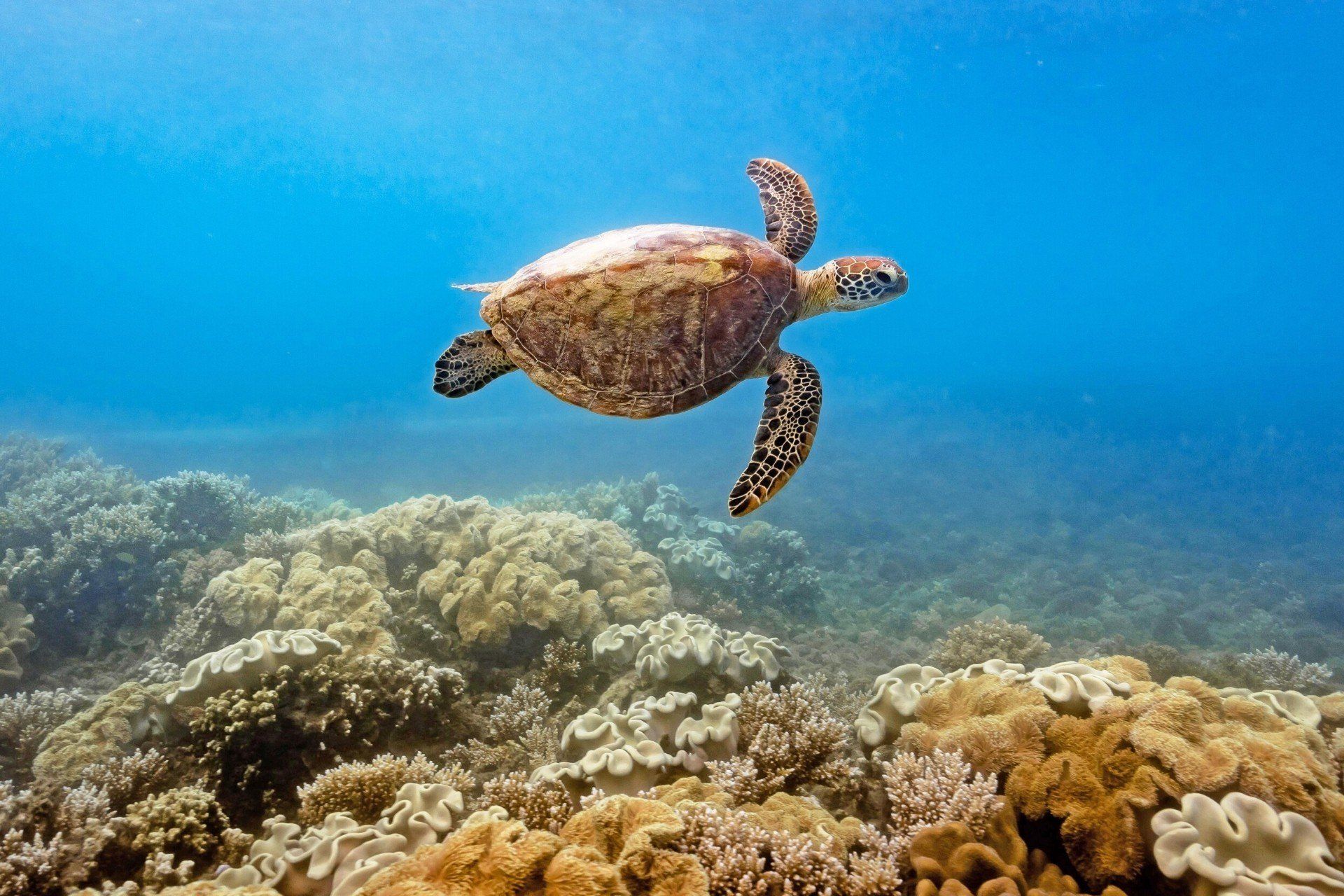
By Karen Dow
•
July 1, 2020
As part of Queensland Mental Health Week, we will be hosting a wonderful women’s only two-day retreat for our lady tribe... The retreat will provide a safe space for participants to: Recharge on a tropical island paradise, whilst supporting local jobs and a local business Rediscover your goals, strengths and those special qualities that make up you Reconnect to a lady tribe whilst having fun, being challenged and inspired. The retreat will focus on incorporating the “7 Habits of Happy People” which includes interpersonal relationships, giving back, working from a place of your strengths and values, finding your flow or mojo, physical exercise/healthy eating, spiritual meaning, positive mindset fostered through mindfulness, optimism and gratitude. Your hosts include a variety of local women who are all passionate about well-being and include: Karen Dow and Donna Fyfe – psychologists, Lesley Sutton - athlete, Gabrielle Clooney - artist, Meryl Slater - artist, Kristina Burton - local business owner and Kristy Valley -local community figure. Your hosts have all faced their own challenges and used their unique strengths to break through mental health barriers. Karen from Shine Strong Psychology is committed to bringing an awareness to our local community about the importance of well-being to women. She has a long history within the adventure travel industry before becoming a psychologist and is now marrying these two loves together in this retreat. “When women come together and share each other’s journeys away from the daily pressures of life you witness something very powerful and beautiful occur. They become relaxed as they open themselves to new challenges, whilst being inspired and supported by their fellow sisters. The memories then begin to be created of fun, laughter and humor. I’ll take that!” Karen Dow.

By Karen Dow
•
May 10, 2020
Mental health professionals are supporting the local community by providing free anxiety group programs to women isolated during COVID-19 and acknowledge the additional impacts and risks associated with domestic violence during this pandemic . Anxiety Warriors is a 6-week one-hour support program delivered in an online group setting for participants who suffer from anxiety and run by Psychologist Karen Dow from Shine Strong Psychology. The course is designed for individuals to gain support and normalise their own experiences whilst learning strategies to manage their anxiety. Come and chat with a likeminded, safe and secure lady tribe! Learn about that tricky brain and how it loops around anxiety Gain some knowledge about your own triggers and blocks Develop tools that will help you take back control from anxiety Discover your unique strengths whilst challenging your negative beliefs about yourself Learn some emotional regulation strategies and mindfulness tools. Dates: The next program commences 2 June 2020, 11.30am -12.30pm Places are limited FREE WITH A GP REFERRAL More information: See our Anxiety Warriors page for more information or Download the brochure Contact us : Shine Strong Psychology 0404 414 699 admin@shinestrong.com.au

By Karen Dow
•
May 6, 2020
Commencing Friday 1 May, an additional treatment approach has been included - Eye Movement Desensitisation Reprocessing therapy (EMDR). Any Psychologist with adequate training and experience in providing EMDR can now do so and their services will attract a Medicare rebate with a valid Better Access Mental Health Care Plan or for a client utilising the Bushfire Recovery Access Initiative (no GP referral required). Focussed Psychological Strategies now contains : Psycho-education (including motivational interviewing) Cognitive-behavioural therapy including : Behavioural interventions Behaviour modification Exposure techniques Activity scheduling Cognitive interventions Cognitive therapy Relaxation strategies : Progressive muscle relaxation Controlled breathing Skills training: Problem solving skills and training Anger management Social skills training Communication training Stress management Parent management training Interpersonal therapy (especially for depression) There is also flexibility to include narrative therapy for clients of Aboriginal and Torres Strait Islander descent. Further information about this announcement, read the MBS article here . Read more about EMDR from Shine Strong Psychology. Source: Australian Psychology Association Inc, EMDR Therapy and Psychology Interest Group
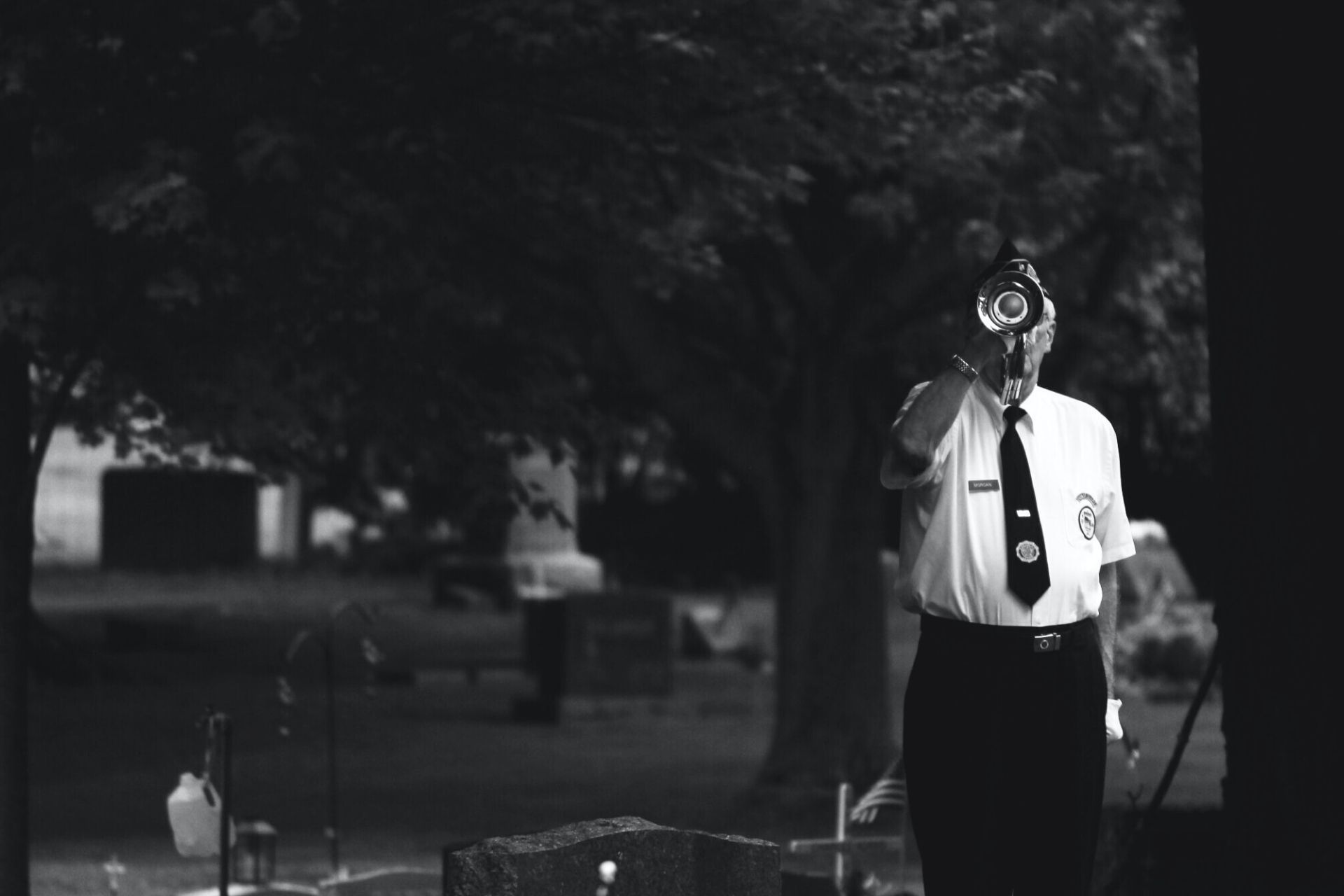
By Karen Dow
•
April 24, 2020
On April 25, 1997, I was a backpacker at Anzac Cove, Turkey, seeking adventures and the next party. I did not recognise the significance of being there at the time until the bugler began playing, silencing the crowd. The cold of the morning air was no longer biting, the hangovers forgotten as the atmosphere pulled us in. I stood together with my friends, other Australians, New Zealanders and a handful of dignitaries both Australian and Turkish, all watching the sunrise, realising tears were now rolling down my cheeks as the horror of their sacrifice sunk in. After World War 1, our Australian way of life was changed forever. Our optimism and enthusiasm to follow our King was blunted as our country felt the scars of a generation of young people affected by war. Those families who were fortunate to celebrate the homecoming of their loved ones could not have foreseen what was yet to come. The psychological and physical damage of war would ripple through affected families and communities impacting on every part of their lives. The medical profession were ill-prepared, and did not understand the emotional difficulties these heroes were subjected to, which they named “shellshock” or “battle ground disease”. Consequently, limited treatment was available other than admission into an asylum, and in some cases this came with a diagnosis of insanity. At that time, insanity was believed to be an inherited disease where families would do all they could to spare the humiliation of this diagnosis. This lack of understating had the psychological profession searching for ways to treat the emotional scars of the nation’s returned heroes. Fast forward 102 years, and psychologists and the medical profession now know considerably more about “shellshock” and “battle ground disease”. We are much better equipped to treat all our front line heroes, including our first responders. Over the past months, our nation has witnessed some of the worst bushfires in our history. We watched brave men and women putting their lives at risk to protect their fellow Australians, livestock and property. How incredibly proud we have been watching the true Australian spirit play out through our TV screens, where a mate is willing to lay down his life for another. But once again, our country’s allegiance to its leaders has sometimes wavered as we grapple with environmental changes and search for solutions to save our landscape, as we know, it for future generations. Meanwhile, our firefighters and first responders carry scars that are unseen as they witnessed horrors that may never be told. We owe all our heroes our deepest gratitude and respect, whilst allowing them the space and resources to heal from their psychological injuries. Thankfully, therapy is now available that can treat psychological effects from the stresses that our front-line heroes experience. In 2013, the World Health Organisation acknowledged that Eye Movement Desensitization and Reprocessing Therapy (EMDR) should be considered as a treatment for trauma and post-traumatic stress disorder. Since then, much research has been undertaken on the effectiveness of this treatment with positive results. We no longer have to live in an era where “shellshock” is a mystery. Psychologists have a deeper understanding of neurological effects of trauma and have developed effective treatments. It is an honour for me to utilise my skills as an accredited EMDR therapist to work with our modern-day heroes to assist them in dealing with their emotional scars of trauma. If you had asked me back on the beach 23 years ago what I would be doing in 2020, “treating psychological trauma” would not have been my answer! Watching the sunrise over the beach at Anzac Cove ended up being a poignant moment in my life that is firmly etched in my mind. If you or any of your family are suffering from front line trauma, or are carers for those suffering, please contact your GP for support, the Department of Veterans Affairs or 24 hour support line such as Life Line on 131114. Note: this article was originally published in Oasis Magazine . You can download the PDF version here .
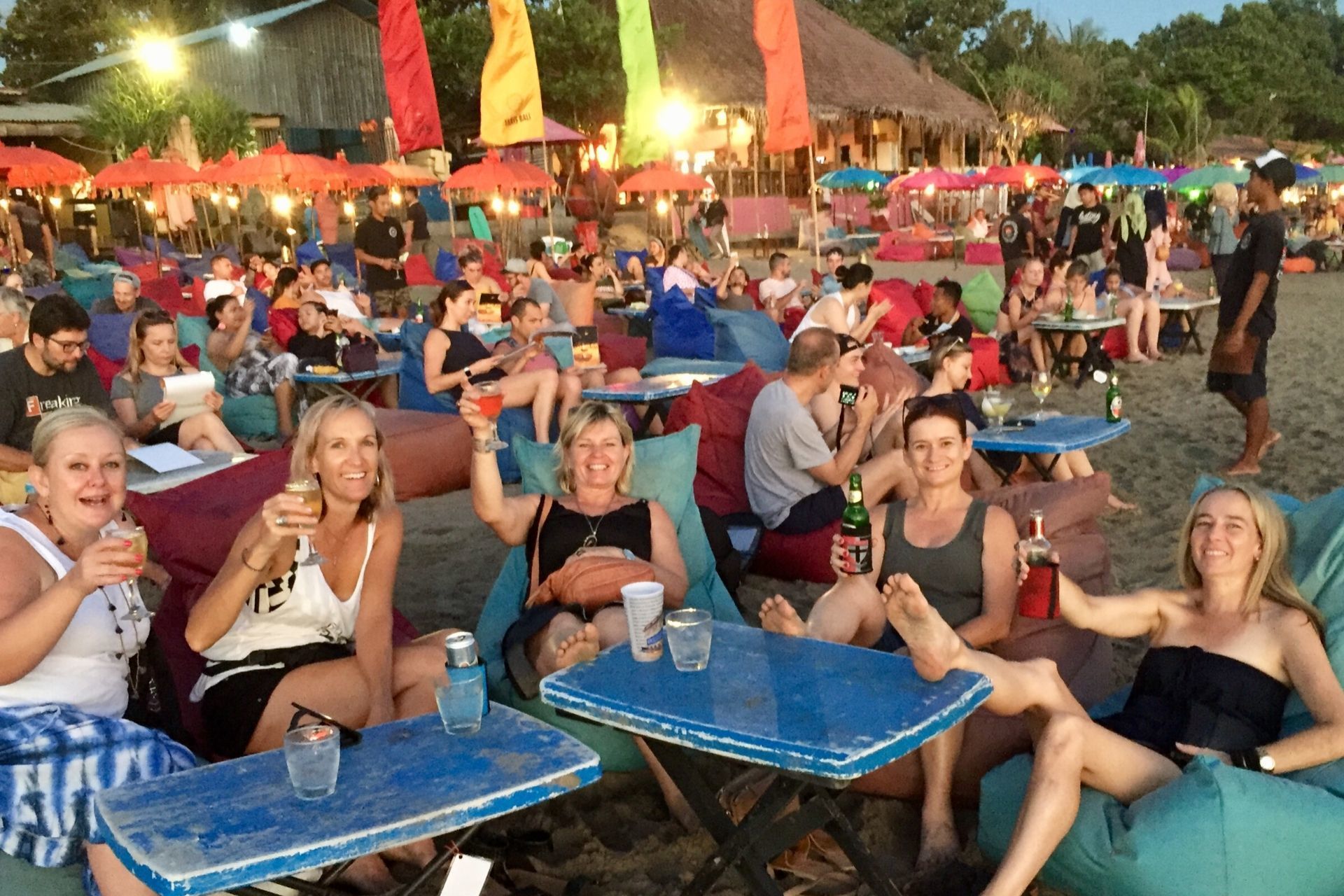
By Karen Dow
•
February 13, 2020
On one hand I was so excited for his adventure but on the other was holding back a flood of tears at the thought my first baby had grown up. Following my sons departure I spent a lot of time reflecting on the whirlwind of the last 19 years of my parenting ride. What a privilege it has been being a Mum to two beautiful sons, but if there is one thing I wished I had done a little more of over the years that would be to have taken more time for my own self-care. Research suggests that if we invest in just 10 minutes a day of self-care in the form of mindfulness or meditation it will assist with our ability to remain calm in the face of life’s storms. Taking time to include some exercise into your day or week also promotes self-care as it produces those great happy endorphins that everyone talks about. But if you are anything like me I struggle to find the time for self-care as often there are no daylight hours left after work, fulfilling all of life’s demands and taking care of my family’s needs. So as this year draws to an end I would encourage you all to set yourself goals for 2020 to improve your self-care. Self-care can also be in the form of rewards. Give yourself small but regular rewards as by doing this we activate the natural chemical called dopamine which gives us a quick hit of motivation, and we all know we could do with a bit more of that! Rewards can be as simple as booking a massage, going to the movies or getting your nails done… whatever works for you. Another type of self-care that is also rewarding is catching up with your lady tribe (can you believe it) and guess what there is actually some real science behind it. In 2016 a study found evidence that spending time with friends increases the production of oxytocin which is the hormone that produces feelings of love, bonding and wellbeing. Cheers to that science! Sometimes it is difficult to fit in the time to give ourselves selfcare but if we don’t regularly recharge our batteries then we are at risk of burn out or depression. For the past four years my girlfriends and I take off on a girls only weekend every May and this has become something I look forward to at the beginning of every year. It’s my way of doing something that is just for me. This proved to be the most important medicine that I could of asked for when my second born son had a skateboard accident in February 2018 in which he fractured his skull and was put on life support. The following three months of my life went by in a blur as my husband and I shared the shifts to be by his side during his recovery whilst juggling to keep both of our individual businesses running. After three months my son had recovered enough to return to school full time which was just in time for my annual girlfriend getaway. What my lady tribe gave me was the space to recharge and to just be me which I hadn’t felt in such a long time. We laughed, cried, drank wine, had adventures and shared our past years pains and joys. What a healing balm to my soul. By the time I returned home I was ready to go back into battle with my modern life again. To all the lady tribes out there please remember to invest in your own self-care in 2020… Note: this article was originally published in Oasis Magazine . You can download the PDF version here .
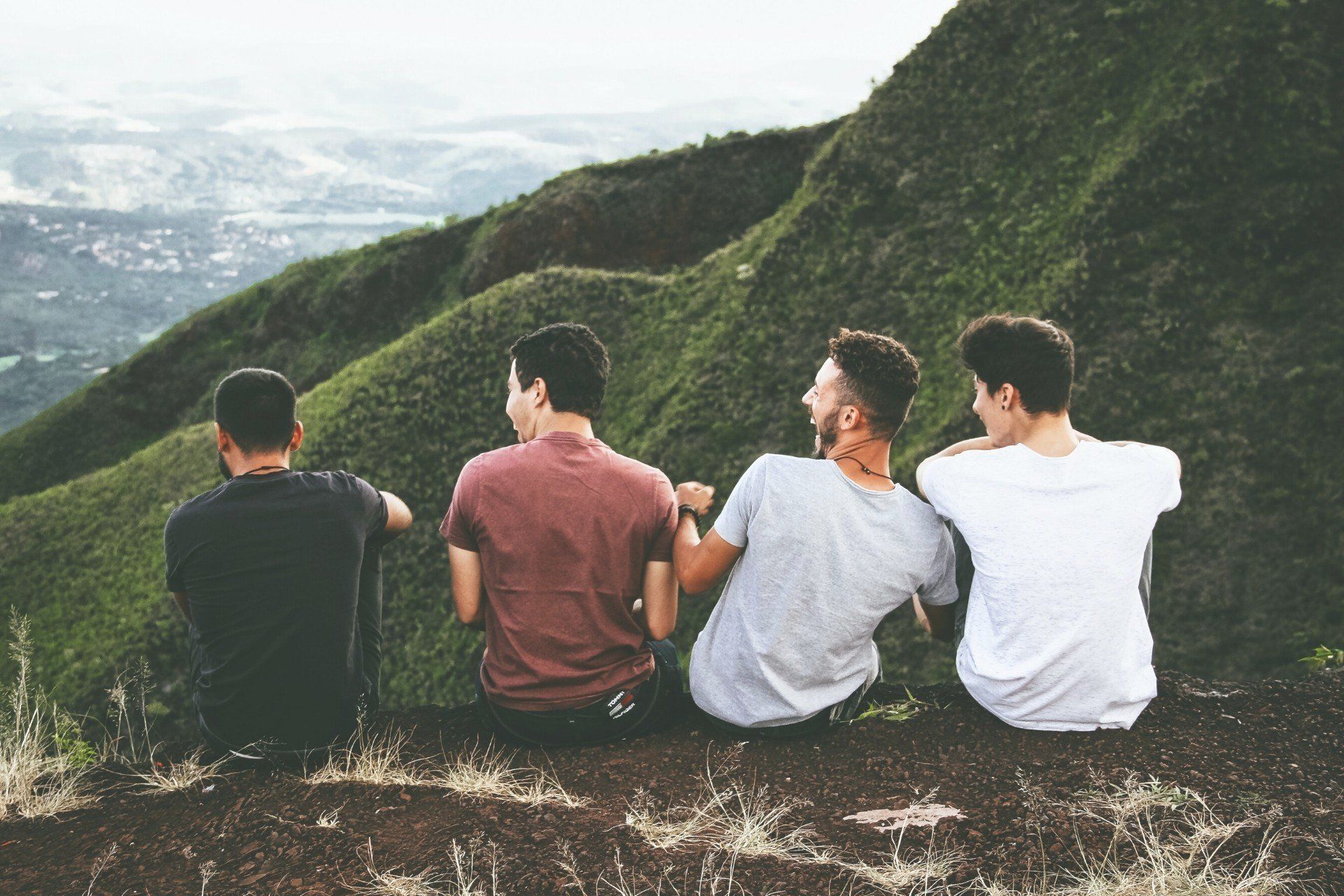
By Karen Dow
•
November 14, 2019
My head was consumed by the upcoming weeks enormous to-do list, having just survived a hectic weekend of housework, driving the kids around and recovering from one too many wines watching the AFL grand final with friends. It suddenly dawned on me, that one of the important men in my life was showing signs of a decline in his wellbeing. But I’m a mental health professional. How did I fail to notice this? Simple - with all the stresses of our normal, daily lives, recognising the signs can be tricky. I thought how often this must be happening, and how important it is for us all to know the signs and risk factors, and know when to act. Quite often, men are carrying a burden of mental health issues that is hidden from our view. They tend to find it difficult to break the stigma of weakness that is far too often associated with depression or anxiety. Around the world, one man suicides every minute, and in Australia, males account for two-thirds of all suicides. Research in Australia has identified that men use different coping strategies than women to mitigate negative feelings associated with mental health. A few of these strategies include humour, keeping themselves busy, exercising, eating healthy, helping others and being goal focused. However, sometimes these strategies fail, so it’s important we know the signs to look for that indicate the much loved male in our lives may be battling depression or anxiety. These emotions may emerge as restlessness or lack of interest in daily activities, changes in weight or sleep patterns, feelings of worthlessness or agitation, a difficulty in concentration or the ability to control their worry. Research has also identified that even though depression is a key factor in male suicide, it is not the major reason. Men are more likely to attempt suicide after difficult life events, particularly the Three D’s - death, divorce and debt. If any of these events occur 4 tips maybe helpful: Attend to the signs of mental health decline by knowing the signs. Ask them if they are OK? Accept and listen to their experience. Aid them to make a connection with others such as professional, friends or even a phone counselor. If you, or anyone you know are experiencing any issues with anxiety, depression or other mental health issues, please visit the Beyond Blue Movember website, or call Lifeline on 13 11 14, or the Suicide Call Back service on 1300 659 467. Note: this article was originally published in Oasis Magazine . You can download the PDF version here .
Your Shine Strong Psychology Professionals
VIEW PROFESSIONAL PROFILES© Shine Strong Psychology. ABN: 44 007 551 663. Privacy Policy.
© Shine Global PTY LTD. ABN: 22 681 223 656.


